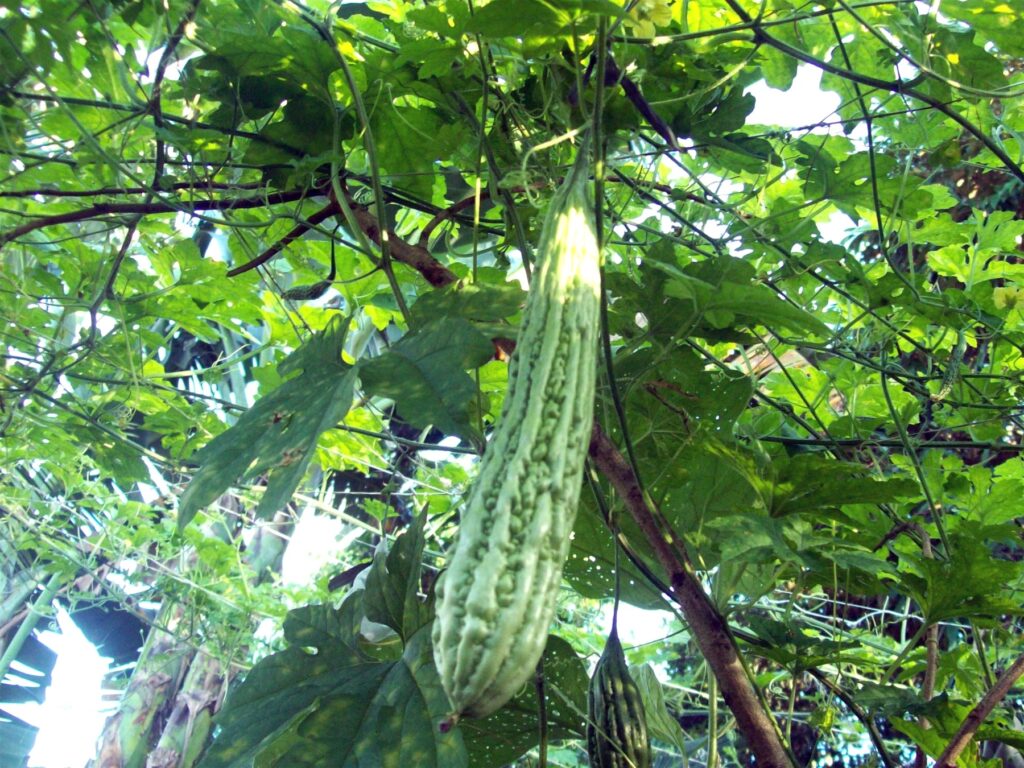Text and Photos by Henrylito D. Tacio
Unknowingly, some of the plants growing right in your farm or backyard can be used in treating ailments and wounds of animals.
A study made by the Institute of Animal Science of the University of the Philippines at Los Baños (UPLB) showed that lagundi, ipil–ipil, kadios, ampalaya, betel nut, kakawate, and akapulko could expel parasites affecting animals.
Dr. Carmencita Mateo, leader of the UPLB study, said that parasitism is a significant health problem for domestic animals in rural areas. “Growth, multiplication, and perpetuation of parasites in animals are rapid in the tropics because of the hot and humid climate,” she explained. “Enormous losses, therefore, are experienced.”
Parasites affecting animals include external or ectoparasites such as those found on skins and hairs (lice, ticks, mites, and flies) and internal or endoparasites like lungworms, kidney worm, intestinal worms, stomach worms, liver fluke, and blood parasites.
Young and malnourished animals of both sexes are most susceptible to parasites. The problem is especially common in the rainy season. The animals may become dehydrated and die.
The parasites are transmitted when an animal eats grass or drinks water contaminated with larvae. Less commonly, they can be spread from the mother to its offspring.
Dr. Mateo said that the manifestations of parasite attacks include a drop in body weight, decrease in milk production, poor food-conversion efficiency, poor reproductive performance, and low resistance to bacterial and viral infections.
Economic losses due to parasitism may be reduced only by giving the animals broad-spectrum drugs. “But these drugs are very expensive and may not be within the reach of ordinary farmers,” Dr. Mateo said. “Local herbal preparations may be given while employing improved sanitation in pens and grazing areas.”
The UPLB researcher added that improving the nutritional level of animals also helps increase their natural resistance to parasites.
In the Bicol area, where one of the UPLB studies was conducted, the following herbal preparations were used as dewormer:
Lagundi: Pound to one kilogram of the leaves. Then stir in two to three spoonfuls of sugar. Give this concoction orally once to the animal.
Ipil-ipil: Pound half a glass of dried seeds into powder. Mix this with a three-fourth glass of water. This is given orally once. But this mixture should not be given to pregnant animals, for it is known to cause abortion.
Kadios: Wash and pound to one kilogram of the leaves. Squeeze the juice out and administer it to the animal once.
Ampalaya: Pound to one kilogram of the leaves. Squeeze the juice from the pounded leaves. This is given to the animal once to three times.
Betel nut: Powderize 8-10 young betel nuts by pounding. Add one glass of water, then administer to the animal.
Kakawate: Wash and pound fresh leaves to extract the juice. This is then applied to the affected area once or twice a day for a week.

Kakawate 
Ampalaya plant 
Eggplants
Akapulko: The procedure is similar to that of kakawate but is applied twice a day for two weeks.
As an emergency measure for minor injuries, a number of plants have been found by the UPLB study that can be applied as antiseptic, covering, or poultice. The following are some of these medicinal plants:
Carrot: Scrape the sides of a clean carrot and mix with dried tobacco leaves or cigars. This is applied on the wound surface and bandaged (only when necessary). Done once a day or once every two days, this practice offers immediate relief.
Eggplant: Pound and squeeze the leaves. Apply the juice to the wound once or twice a day for one week.
Most of the aforementioned herbals are also listed in Ethnoveterinary Medicine in Asia, an information kit on traditional animal health care practices published by the International Institute of Rural Reconstruction (IIRR) in Silang, Cavite.
One of the health problems highlighted in the book is about external bleeding. “External bleeding is usually a result of wounds due to cuts, bruises, insect bites, ulcers, skin parasites, and foot-and-mouth disease infections,” the IIRR book explains.
What can farmers do when there’s external bleeding? First, stop the bleeding by doing any of the following:
· Crush fresh leaves of sweet basil or neem. Apply the pulp to the wound using a tight bandage. Any clean cloth will do.
· Mix sugar and freshly grated ginger rhizome in equal proportions. Apply on a bandage or cloth and tie the cloth over the wound.
· Powder mango tree bark and place it on the wound.
“If bleeding does not stop, apply a tourniquet,” the IIRR book suggests. But if the bleeding still won’t stop, it’s time to seek professional help.
If the bleeding stops, however, the next step to do is clean the wound. Apply medicine. Suture if necessary. If the wound has maggots, apply crushed fresh leaves of custard apple or atis.

